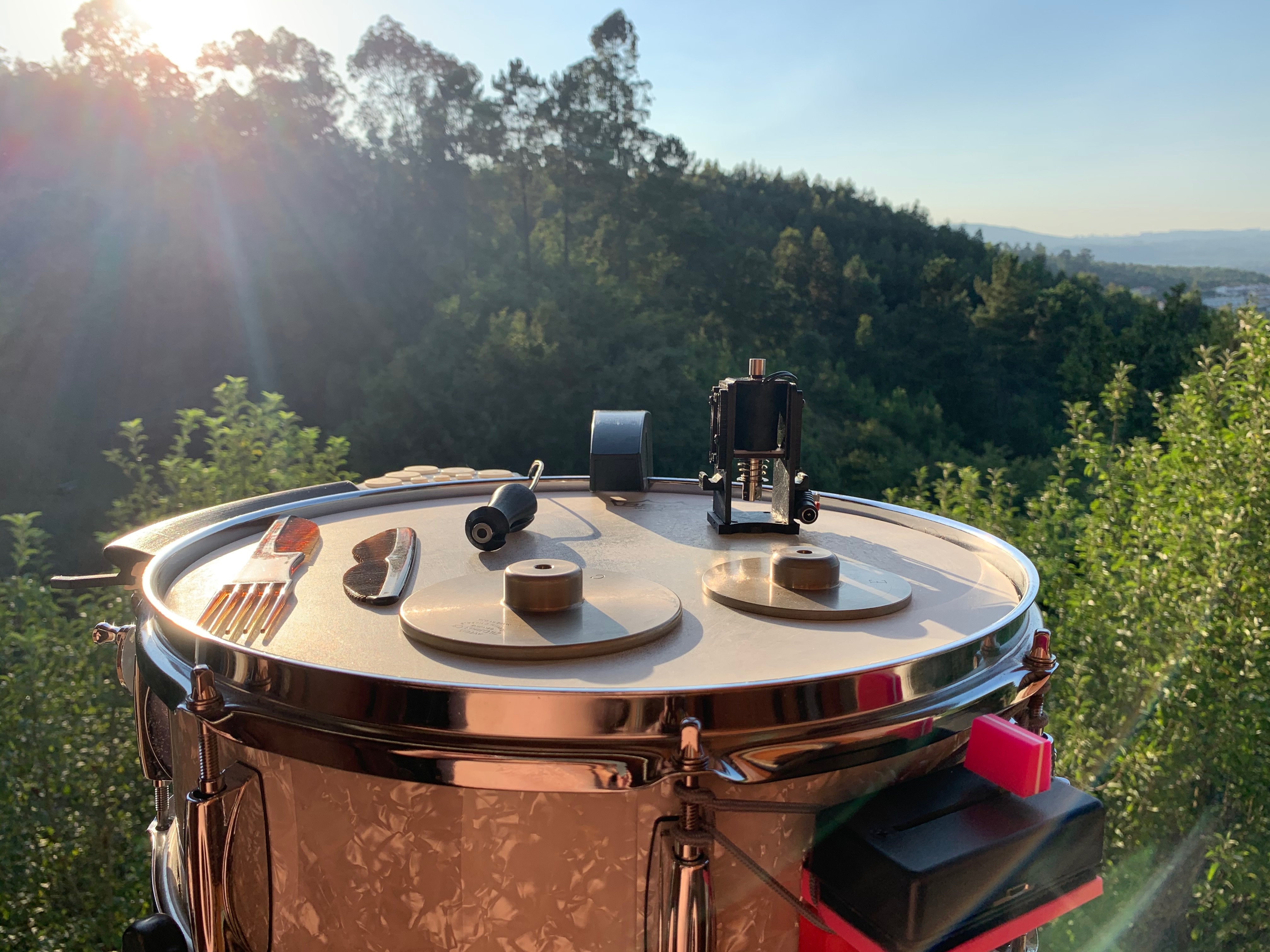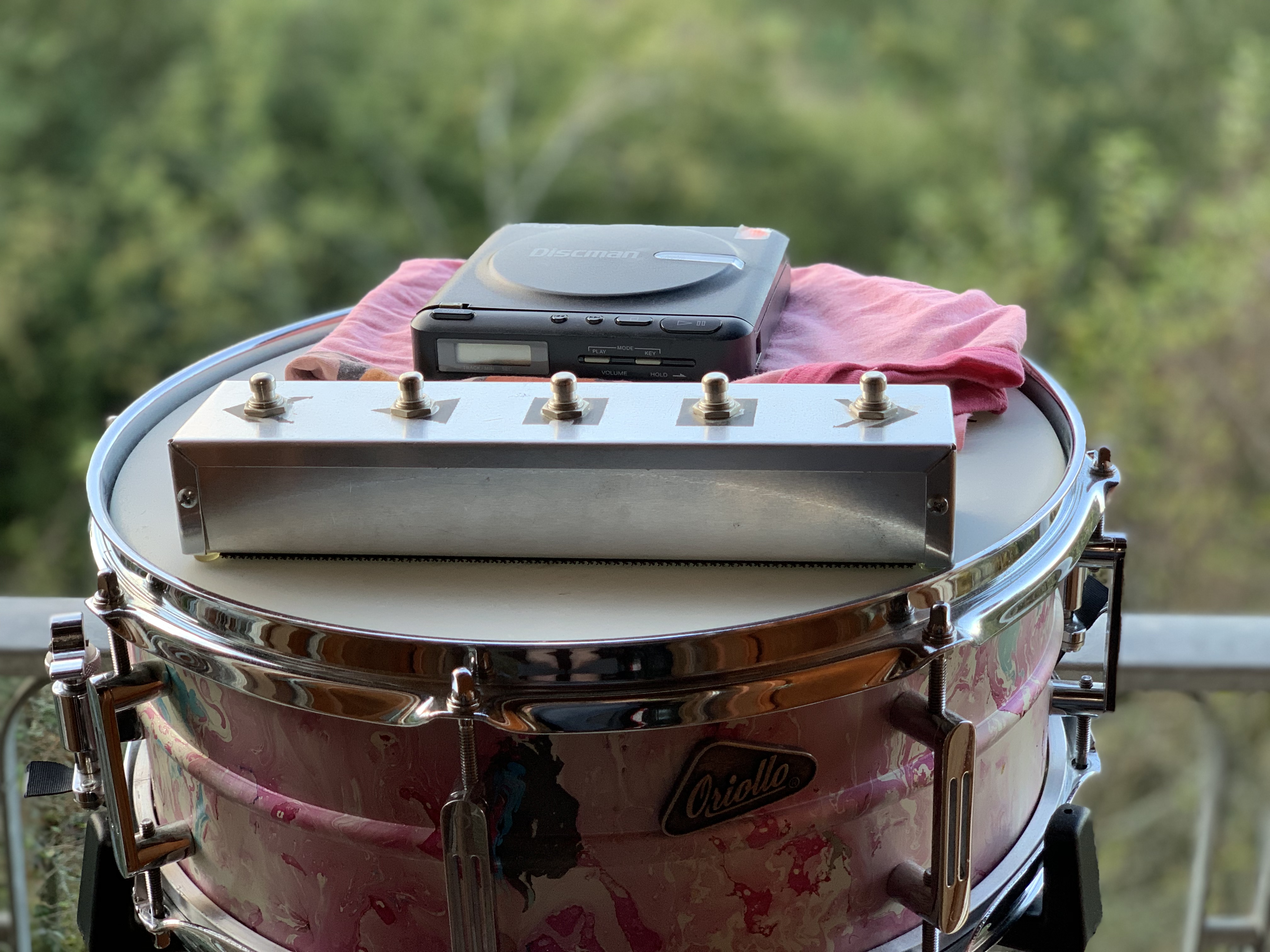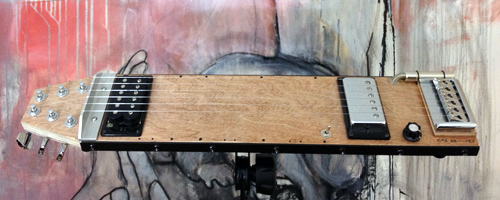Landscape NOON experiments
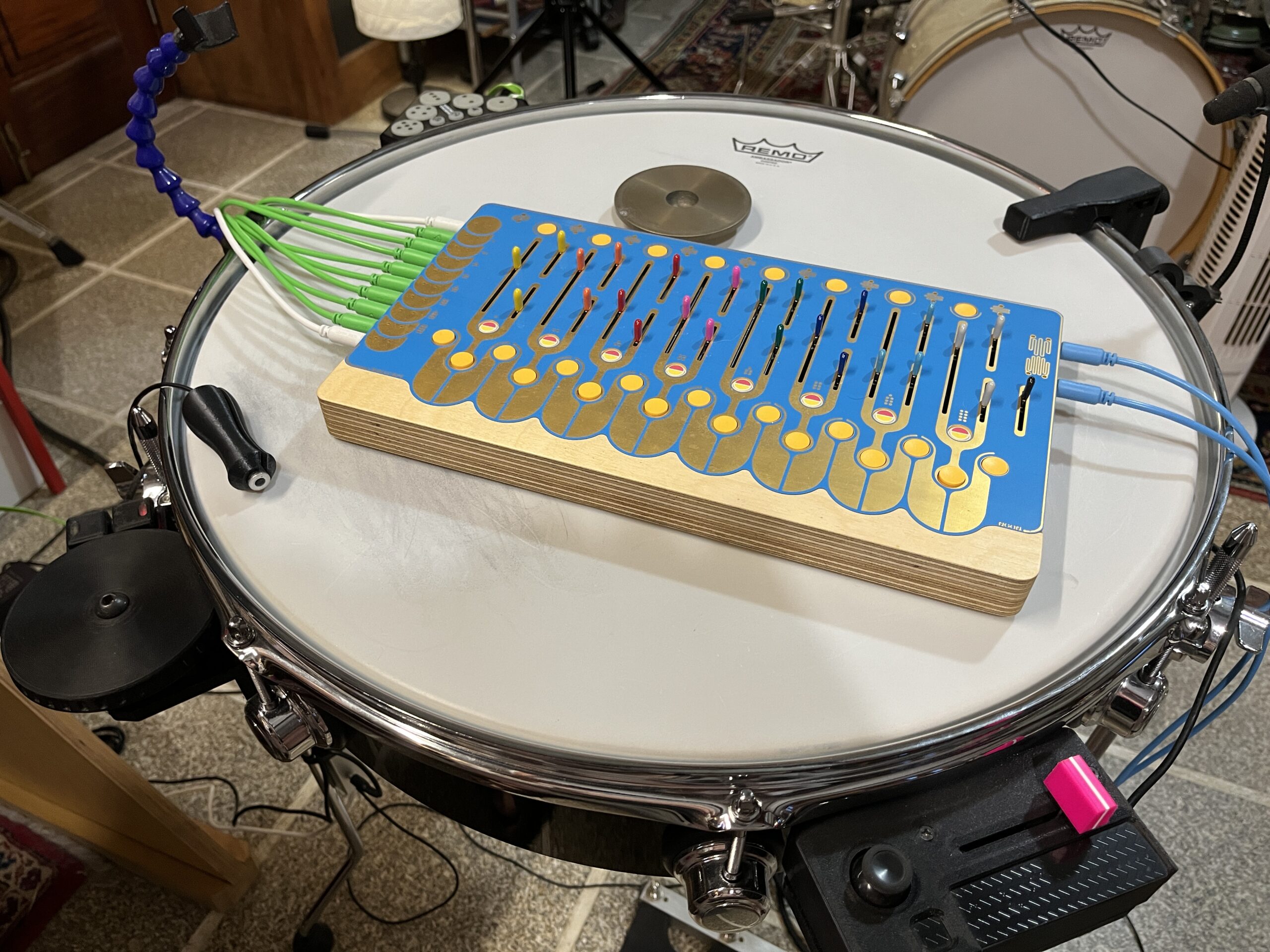
Since I first saw it announced, I’ve been super excited about the Landscape NOON. It seemed to, in one box, do what I had been wanting to achieve with my experiments in modular synthesis for a while. Being able to trigger multiple independent (or not) voices while have a lot of control over the shape and contour of them. Being a huge fan of noisy and chaotic synths, I also really like the passive synthesis approach here, bring out that weird/starved power cycling sound you get when powering on/off a circuit, something which I’ve done with my 9v battery-powered ciat-lonbarde synths many a time.
SP-Tools – Machine Learning tools for drums and percussion (alpha)
For the last few years I’ve been working on ideas and approaches to using electrics in a realtime/low-latency context with acoustic drums/percussion. The most recent of these have been working with the FluCoMa Toolkit to do some of the things I was doing before (but better) as well as try out some new things altogether.
During that time I honed in and refined a lot of the settings, descriptors/parameters, and algorithm choices to get something that I felt performed really well. Even as compared to commercial alternatives.
I decided that once FluCoMa put out the v1 of their toolkit, I would try and wrap up a bunch of the ideas into a cohesive package that focused on the approaches that I’ve been working on. After pushing hard on it for the last few months, I feel I have something that I can put out there. It’s still in what I would consider an alpha stage, though everything is quite stable. I’m only really considering it alpha as I will likely add more objects/abstractions/approaches, refine the ones that are there, as well as get a sense of how people are using and want to use it and potentially tweak some of the structure.
So for now you can download the package here:
http://github.com/rconstanzo/sp-tools
I’ve also made a quick overview video that talks you through the basic idea of the package, shows off some more examples, and will hopefully get you going with it.
If you have any comments or questions, or run into any bugs/problems, feel free to drop me an email and/or create an issue on GitHub.
Kaizo Snare
I spent the better part of last year working on a performance that was a strange combination of things. It pulled together turntablism, feedback/friction, machine learning, signal decomposition, 3d printing, robotics…and a snare drum. All of these were ideas I was working on and exploring separately, but as things can sometimes do, they ended forming into something that was much more than the sum of its parts.
Rhythm Wish
Although this idea/piece is a couple of years old now, I realized I’ve not written about it in any detail (although I have talked about it on several occasions). So this is that. But more than that, I want to talk about what this idea isn’t, and how gloriously isn’t it is.
This is story of how a complicated idea became simpler and simpler until nothing else was left but its core.
Friends. Objects. Lights. Feet.
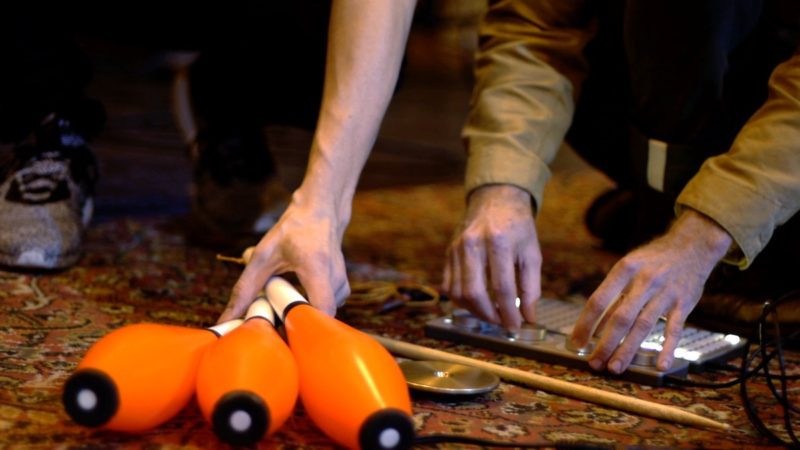
Over the years I have had many wonderful discussions with people whom I have never met. Either through emails, forums, or even chatrooms I have talked about all manner of things with people scattered around the world. Sometimes these virtual friendships manifest in the physical world and a thing is born. An art thing. This is one of those times.
Black Box project
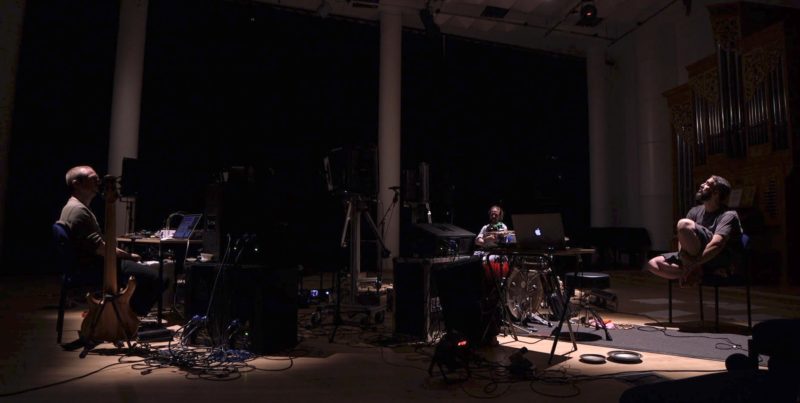
The Black Box project is a project that involves Pierre Alexandre Tremblay on bass/electronics, Patrick Saint-Denis on robotics/electronics, Sylvain Pohu on guitar/electronics, and myself on drums/electronics. It’s a four-way collaboration that has gone through two residencies (in Montreal and Huddersfield), to work out the finer details of putting a large-scale show together.
It looks and sounds something like this:
Cut Glove – new gamepad-based software
Here is the new piece of software based around an Xbox 360 controller that I’ve been working on for about a year. It is called Cut Glove and it’s a live-sampling and processing patch that contains mappings based on video game mechanisms and metaphors.
This is what it looks like:

Some of the core ideas in the patch are based on sampling and processing modules I developed in The Party Van, another piece of software I’ve written. However, in Cut Glove I rebuilt everything completely from scratch, with tons of new features, more options, better overall sound, etc…. At the core of Cut Glove is karma~, a Max external I recently put out which can you read about in detail here.
Before I go into detail about what Cut Glove does, and more importantly, how the mappings are implemented, here is the first of three Cut Glove performance videos in this blog post:
You can click here to download Cut Glove(v01), the required externals, and instruction manual.
The rest of this blog post will go into detail about the background, development, and technical implementation of Cut Glove.
karma~
Here it is. Finally…
I am incredibly proud to present karma~, a dynamically lengthed, varispeed record/playback looper external for Max.
And here is a tutorial video showing some of what karma~ can do:
karma~, has been in somewhat active development since September 2014, when I first contacted raja to see if he would be interested in writing the C code for it. Thankfully, he was interested and able to. From that point we’ve exchanged hundreds of emails discussing the feature set, implementation, and bug fixery. I am eternally grateful for his programming wizardry and endless patience with me.
New Instrument – Grassi Box
I’ve been working on a relay-based hardware repatching instrument for quite a while. The idea being that I could use my computer (running Max) to control a bunch of my weird (ciat-lonbarde) hardware synths.
I recruited Dan Wilson of Circitfied to build the transistor/relay system that works on top of the Arduino teensy core.
Here is a video using attack-based random repatching of an Old Mr. Grassi using my drumset.
And here is a video using prepared/bowed guitar to drive analysis-based resynthesis of a Fourses and Fyrall:
The Party is back
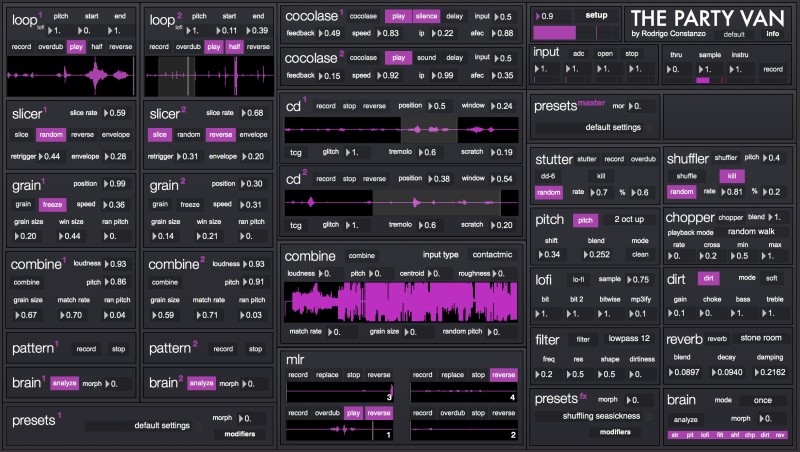
After over a year, I’m finally putting out a version of The Party Van, a free software system/instrument/environment that I built in Max. It’s also officially out of beta now and the version numbers will reflect that. It has gone from v09 to v1.0. It’s been about three years since I started working in Max again and started building what eventually became The Party Van. The software has changed radically since the last release, and has been ready to release for some months now. It was just a matter of making the time to finish updating the manual with all the new features/sections/etc….
I have to thank all the guys on the monome forum for keeping me still plugged into getting the software public-ready and specifically to Thorsten and Morgan for helping me finish the manual.
You can download and find out more about The Party Van by clicking here.
And here are a couple of videos made using The Party Van.
In progress
The last few months have been both slow and busy at the same time. In that time I’ve been slowly working on multiple pieces/projects simultaneously. I figured it might be interesting to make a blog post about things in progress.
After finishing a piece for good friend Linda Jankowska and the end of last year I started working on two other pieces. The first one being a piece for skipping CD player and drumset. The working title is “Rhythm Wish”, but I’m not fully settled in on that. It looks/sounds something like this:
The piece, compositionally, will fall somewhere between two approaches I’ve been working on recently. First the kind of open/memory/improv structure of pieces like the .com pieces, and to a lesser extent ‘an amplifier‘, and the game/challenge/etude modes of interaction found in the ‘Battle Pieces‘ from a duo (strikethrough me & you) with another good friend Sam Andreae.
The piece will be constructed in a way that before the performance the performer (either myself or David Meier) has to improvised some material, given certain prompts. Those materials will then be burned onto a CD player (with the un-muted modification ala Nic Collins CD Hacking). The CD player will sit on the snare drum (as in the demo video I made above), which will cause the CD to skip around and act unpredictably. That glitchiness (along with the order of the tracks on the CD) will form the structure of the piece at a larger level. The more local interactions will be defined by challenge/interactions that the performer will have to engage with, along with the recorded version of themselves.
There will also be some real-time ‘nudging’ of the CD player via a footswitch that I hacked together from an old remote control for the CD player.
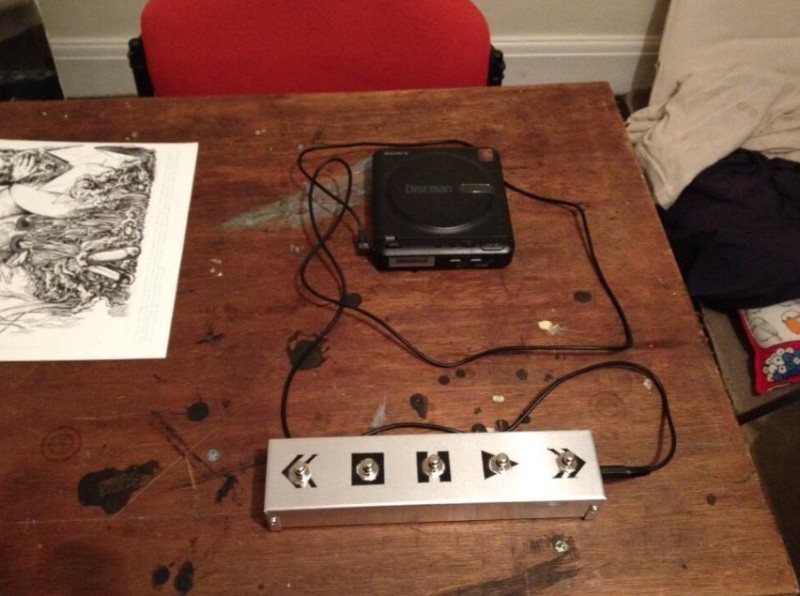
As evident in the video, the sound of the CD player blurs with the sound of the acoustic drumset, which is very much intentional. Some of the seedling ideas for the piece were of a sort of temporal duality. With a protagonist/antagonist fighting it out musically, one being live and one being recorded. I like the poetics of it being the same person/instrument with the conflict coming only via the displacement in time (then vs now, past vs present). I took these ideas and played around with a ‘3-act play’ structure, which is still somewhat present in the larger structural framework, but is less important than it originally was.
I will also play with illusion in terms of what is real and what is recorded. This kind of interaction was a mainstay in the performances of the performance art duo I have with Angela Guyton, Takahashi’s Shellfish Concern. During the era that relied on live painting + live sampling, the idea of hearing the sound of the lines being put down, then not hearing them (or hearing a different recording) when seeing it happen again proved to be very powerful. This was very much inspired by the ‘Club Silencio‘ scene from Mulholland Drive. (more on Takahashi’s Shellfish Concern below)
In addition to the ‘Rhythm Wish’ I am also working on a piece for tuning forks and computer hard drive. It looks/sounds something like this:
The piece will be for four performers all sitting around a table, with the computer hard drive in the middle. The piece is written for a new ensemble I’m performing in called bird rat centipede and will be called ‘the keys to everything that has ever existed’.
The main compositional material of the piece will be ‘privacy’. In the sense of ‘hitting the tuning fork on the table and pressing it to the table’ being a ‘public’ sound, and ‘hitting the tuning fork on your knee and holding it near your ear’ being a ‘private’ sound. I very much like the idea of multiple perspectives on the same piece, particularly since there is no ‘real’ perspective. Each performer hears a, literally, different version of the piece, and same goes for the audience and/or recording.
The computer hard drive is modified with an ‘analog HD’ by Gijs, which is essentially 3 oscillators and an amplifier driving the voice coil in the hard drive (so it acts like a speaker).
I’ve also started working on my dfscore system, which is a networked laptop score displaying software system I’ve been working on for a while (which has taken a bit of a back burner position for a bit). I used a very stripped down version of it in ialreadyforgotyourpussy.com with Richard Craig, which looks/sounds like this:
I had pitched the idea to the Manchester Jazz Festival last year, and although it was not accepted, I did continue talks with them. The project is now moving forward again and is, quite unusually for me, being financially supported by Jazz North. I’ll have more details on this soon, but it is very exciting to be working on the system again.
It will eventually be a software system that you can quickly install on any number of laptops which are connected up via ethernet cables (for minimal latency). This will allow for a more dynamic/adaptive type of composition which would work very well with the kind of music I’ve been writing as of late. I will also be openly sharing all of the code and try to make it as user friendly as possible.
I’ve also finished putting the finishing touches on this MIDI to relay system built for me by Circitfied (Dan Wilson). I commissioned Dan to build a box that would take MIDI messages and turn on/off relays which I would connect to a bunch of ciat-lonbarde instruments. The box on it’s own is pretty cool/exciting (not to mention great looking!) but it will be much more so once I pair it with some crafty programming.
I plan on building several modules to drive it, including an attack detection to random re-patching, and a much more challenging/exciting analysis-based system where I can analyze the audio descriptors (using Alex Harker‘s externals for Max) of each combination made by the box, then by analyzing incoming audio, create a resynthesis of that audio using repatching/reconfiguration! Very similar to the synthesis used in my CCCombine Max patch, but instead of using a bank of samples, it would use hardware synthesis/sounds.
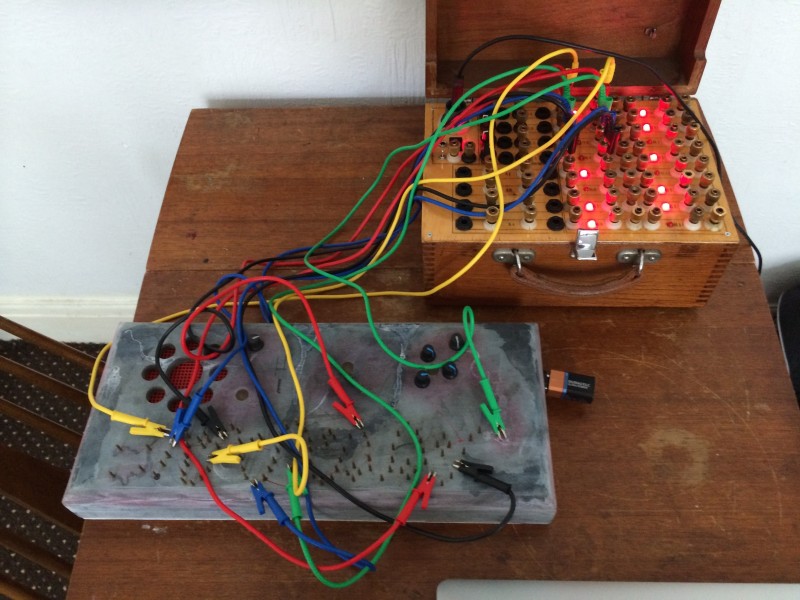
Lastly (but not leastly) is a continued development with the next phase of Takahashi’s Shellfish Concern. We’ve moved away from an amplified canvas and towards a DMX lights based setup. That looks something like this (though not directly focused on Angie):
The trajectory of the work has been moving further and further away from an ‘art object’ in the last few years, so this is the final ‘jump’ away from physical stuff. Most of it is still based around an image, but now it’s smeared in time/space by using flashing lights as the only visual component. The sonic component is still being worked on, though it’s mainly been sampled voice/breathing.
C-C-Combine
C-C-Combine is a corpus-based audio mosiacing application, built in Max/MSP, based on concatenative synthesis.
It sounds like this:
And looks like this:

New Instrument – The Specty
Finally finished the Specty, the more compact and portable version of my Specto instrument. It looks and sounds like this:
For more info including build pictures and all of that click here.
A Greater Horror – Bastard Video
So been doing this group with Mauricio Pauly and Alex Tod (A Greater Horror) since last year, but more recently it’s started picking up steam. We’ve got a gig at the Manchester Jazz Festival coming up in July and I’m quite excited about it as I finally incorporated my monome/arc/software setup (The Party Van) into the setup.
Here’s a video we made a few weeks ago filmed by Angela Guyton.
It’s pretty brutal.
I Rock the Party that Rocks the Party
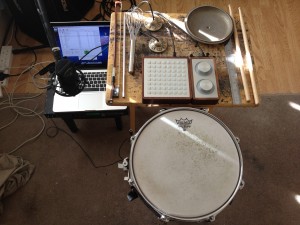
So as you may know from some of my previous posts I’ve been doing lots of Max/MSP programming, moving my previously hardware-centric performance setup into the laptop.
I recently put out the v05 version of my Party Van software, and it is looking/sounding great if I don’t say so myself.
Here’s a performance video using solo snare + electronics:



